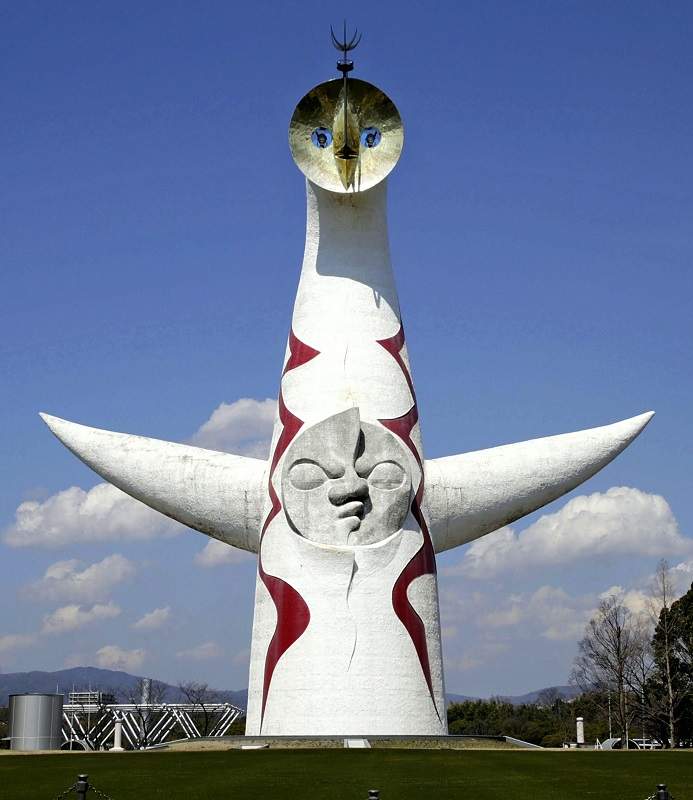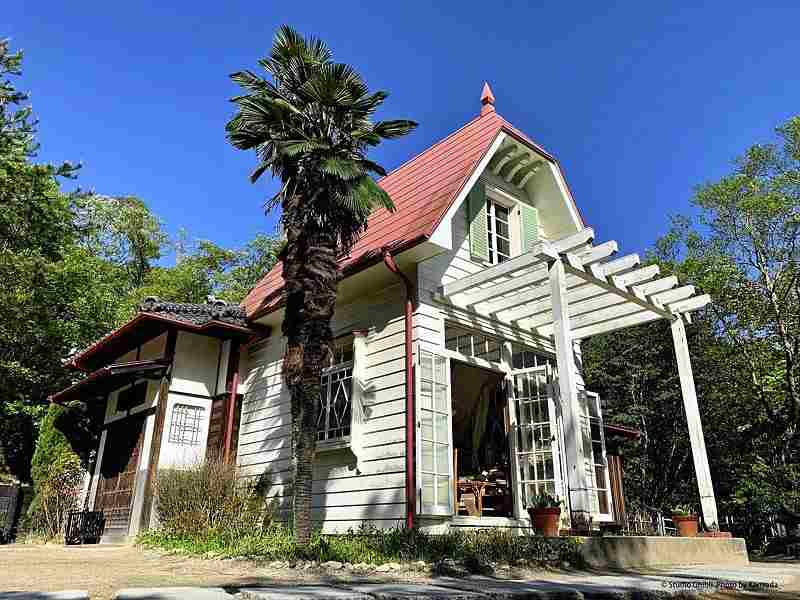
The Tower of Life in Tsurumi Ward, Osaka City
6:00 JST, June 14, 2022
OSAKA — The 90-meter-tall Tower of Life, a symbol of the 1990 International Garden and Greenery Exposition in Osaka, faces an uncertain future.
The Osaka city government closed the tower more than 10 years ago, and had initially planned to demolish it. However, calls have emerged for the tower to be used to boost momentum for the Osaka-Kansai Expo in 2025. City officials say plans to topple the structure will go ahead without a feasible proposal to preserve it.
The tower sits in the Tsurumi Ryokuchi expo memorial park, which straddles Tsurumi Ward, Osaka, and Moriguchi, Osaka Prefecture. It was designed to resemble a large tree based on the expo’s theme, “The Harmonious Coexistence of Nature and Mankind.” The tower’s 54-meter-high observatory offered panoramic views of the city and the structure attracted about 1.2 million visitors during the six-month-long horticultural event.
The city government continued to operate the observatory after the expo ended, but visitor numbers dropped to 20,000 in fiscal 2007, and the tower was closed in March 2010.
In 2017, as part of a process to select an operator for the park, the city government solicited ideas from the private sector to revitalize the site. Four of the 14 organizations that submitted ideas proposed that the tower remain and be used in some form, such as a giant slide or merchandise sales facility.
However, the operator that was selected in December 2019 to manage the park for a 20-year period from April 2020 intends to demolish the tower and develop a garden.
The tower’s fate has become a topic of conversation due to the upcoming Osaka-Kansai Expo to be held in 2025. The theme of the new expo, “Designing Future Society for Our Lives,” partly overlaps with the name of the tower. The city government is reportedly considering using Tsurumi Ryokuchi park as a satellite site for the 2025 expo.
“If the tower is demolished, it could dampen momentum for the expo,” a senior city government official said.
Local residents have been calling for the tower to be preserved, prompting the city government to rethink its fate. The local authority now plans to conduct a survey in the next fiscal year on how to make good use of the tower, and hopes to make a decision by 2025. If the survey fails to generate a positive outcome, the city will dismantle the tower in accordance with the wishes of the new management.
Part of the tower’s construction cost was funded by the public. Tomoya Takaishi, an 80-year-old folk singer, organized a fundraising campaign based on a bicycle caravan from Niigata Prefecture to the expo venue.
“The tower brims with the feelings of many people,” Takaishi said. “I’d be happy if it remains as it is.”
Different fates
Expo-affiliated architectural objects have met with different fates down the years.
***

The Tower of the Sun in Suita, Osaka Prefecture/figcaption>
The Tower of the Sun, created by artist Taro Okamoto (1911-1996), was a symbol of the 1970 Osaka Expo. Initially, it had been slated to be demolished when the expo ended, but was eventually allowed to stand, following strong opposition.
After a complete overhaul, the tower was opened to the public in March 2018 for the first time in 48 years.
The tower remains popular, and has drawn about 860,000 visitors over the past four years.
***

Satsuki and Mei’s House, a popular attraction at the 2005 Aichi Expo.
The 2005 Aichi Expo featured Satsuki and Mei’s House, a replica of the lead characters’ residence in the movie “My Neighbor Totoro.”
The replica is scheduled to be publicly viewable again at Ghibli Park, which opens in Nagakute, Aichi Prefecture, this fiscal year.
***

Aquapolis, a symbol of the Okinawa Expo, in Motobu, Okinawa Prefecture, in 1975.
Conversely, Aquapolis, a symbol of the International Ocean Exposition held in Motobu, Okinawa Prefecture, in 1975, was used for about 20 years before being destroyed. Themed around “a future city on the sea,” the International Trade and Industry Ministry — currently the Economy, Trade and Industry Ministry — and other entities built the 30-meter-high steel structure on an about 1-hectare-wide sea pontoon. When the expo ended, Aquapolis remained open to the public. However, it was closed in 1993 due to declining visitor numbers and the aging of the structure, and finally demolished in 2000.
"Society" POPULAR ARTICLE
-

M4.9 Earthquake Hits Tokyo, Neighboring Prefectures
-

Israeli Tourists Refused Accommodation at Hotel in Japan’s Nagano Pref., Prompting Protest by Israeli Embassy and Probe by Prefecture
-

M7.5 Earthquake Hits Northern Japan; Tsunami Waves Observed in Hokkaido, Aomori and Iwate Prefectures
-

Tsukiji Market Urges Tourists to Avoid Visiting in Year-End
-

M5.7 Earthquake Hits Japan’s Kumamoto Pref., Measuring Upper 5 Intensity, No Tsunami Expected
JN ACCESS RANKING
-

Tokyo Economic Security Forum to Hold Inaugural Meeting Amid Tense Global Environment
-

Keidanren Chairman Yoshinobu Tsutsui Visits Kashiwazaki-Kariwa Nuclear Power Plant; Inspects New Emergency Safety System
-

Imports of Rare Earths from China Facing Delays, May Be Caused by Deterioration of Japan-China Relations
-

University of Tokyo Professor Discusses Japanese Economic Security in Interview Ahead of Forum
-

Japan Pulls out of Vietnam Nuclear Project, Complicating Hanoi’s Power Plans























